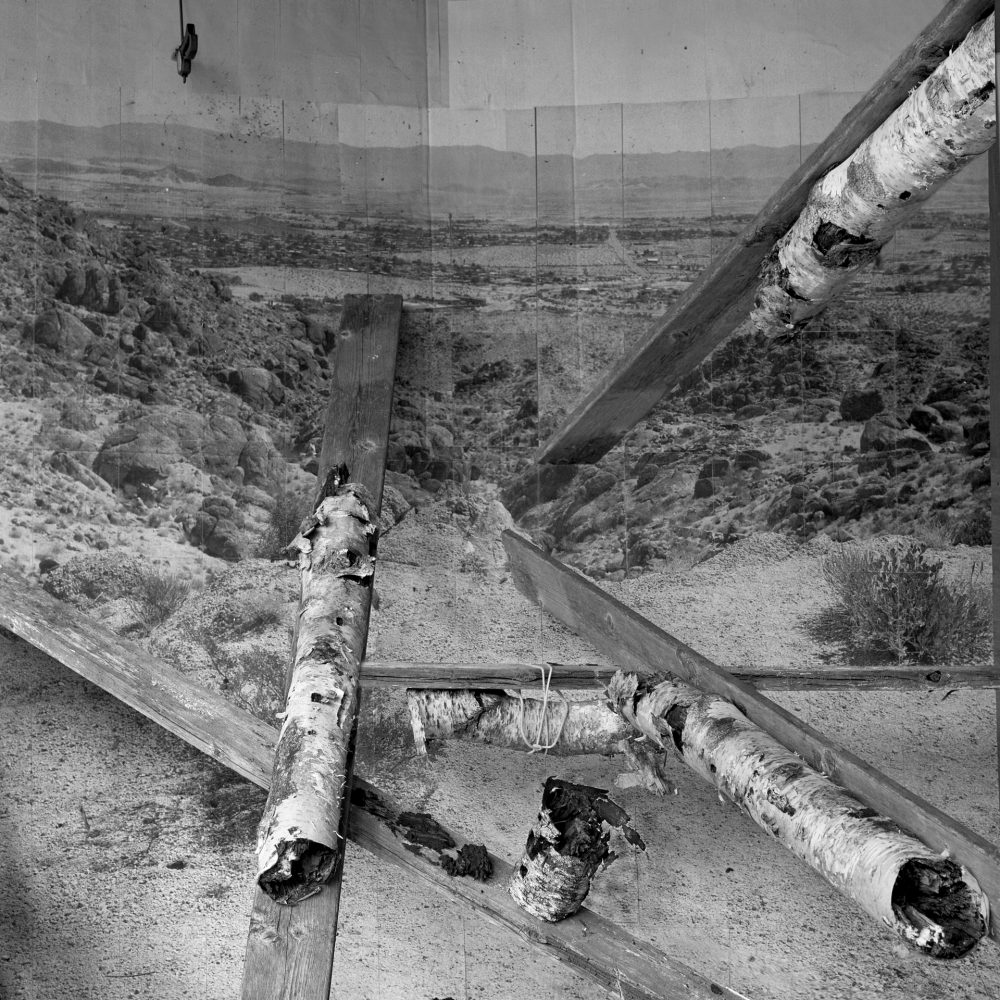Still Life #1 by Rodrigo Valenzuela
- Title: Still Life #1
- Artist: Rodrigo Valenzuela
- Medium: Archival pigment print
- Size: 44"h x 44"w
- Creation date: 2013
- Added to collection: 2016
- Donor: Purchased by Portland Community College, Rock Creek Campus
- Campus: Rock Creek
- Location: B5/1 Hallway gallery rm 222
This photograph by the Chilean-born artist Rodrigo Valenzuela asks us to question our own preconceptions about space and barriers in space. At first glance, we seem to be looking out into a desert vista, and the crudely constructed barricades in the foreground mimic deep perspectival lines creating plunging spatial illusion and depth. But on further examination the desert vista is a series of photographs glued to a wall, and the space becomes the disorientingly shallow indoor room of the artist's studio with a carpenter's clamp dropping from the sky like the hand of God. What is far is near and what is near calls us to the idea of far: the crudely thrown together scraps of lumber and tree limbs become both the concrete detritus of makeshift barricades or borders (whom are they designed to keep out?) while simultaneously projecting the idea into the viewer's mind of deep space. We are in a physical space as well as a mental space simultaneously; the quality of holding both – the actual shallow room and the illusionistic idea of deep vista – simultaneously in the mind is a visual equivalent of John Keats' poetic idea of "negative capability" – the ability to hold contradictory ideas in order to be "capable of being in uncertainties, mysteries, doubts, without any irritable reaching after fact and reason."
The artist writes: "I position the viewer as the goalkeeper, a passive participant of the game, as an observer of systems and structures – I share with her or him the responsibility in the making (sense) of the images. Each piece is a set of images, an organized disagreement." Given this invitation for the viewer to share responsibility of meaning, this image might be seen as a comment on the very ideas of borders – both physical and conceptual – in a time when border walls loom both in concrete and ideological form.
Writing about Valenzuela's work in Artillery Magazine, Cooper Johnson observes: "The series leads the eye, tricks the mind, and asks the viewer to step inward through the planes of the image, into the interval of time suspended between the foreground and inner photo (perhaps even into the solitary realm of the artist’s process). But at the same time, they obstruct. In the details in the periphery, Valenzuela deliberately reveals the illusion, almost forcing us to admit: we want to be deceived."

